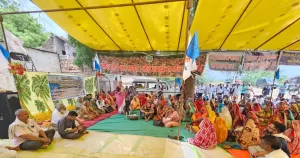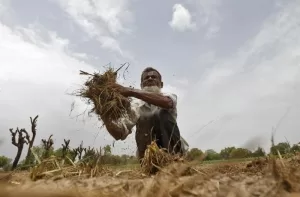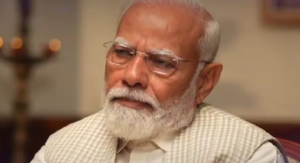‘Freedom is the greatest fruit of self-sufficiency’
– Epicurus
The COVID-19 pandemic has been detrimental for globalisation and has led to a clamour for protectionism.
India’s national strategy is also in line with this trend with calls for ‘Atmanirbharta’ and ‘vocal for local’ increasing. In this context, we need to reexamine our policy towards edible oil domestic production and imports.
Traditionally, India was an exporter of edible oil before Independence, became self-sufficient post-Independence (till the early 1970s), floundered in 1970s and 80s and regained self-sufficiency in the early 90s (1991-94). We are currently the biggest importers in the world!
India imports around US $ 10 billion of edible oil (15 MT) annually which constitutes nearly 70% of our annual edible oil requirement of 23 million tonnes. Thus, whether you eat a roadside samosa, matthi, dosa or chola bhatura, branded biscuit or namkeen, or even aloo puri or sabzi at home, there is almost a 70% chance that it is made using oil which is not from India.
Furthermore, imported palm oil or its derivatives are used as ingredients in soaps, shampoos, shaving creams and other cosmetics too. This is not an industry that comes across as a shining example for ‘atmanirbhar’ India. An analysis of the last five decades will help us understand how we reached here.
From Independence until the mid-1970s, we averaged 95% self-sufficiency in edible oil, except for the war years and its aftermath when self-sufficiency fell down to early 90s in percentage. The cuisine, cropping patterns and climatic conditions had led to the preference of mustard oil in north and east India, coconut oil in south India, groundnut or cottonseed oil in west India, and sesame oil in Rajasthan.
This regional preference for indigenous edible oils had evolved over centuries and had become a part of our culture. In 1973-74, groundnut, mustard and cottonseed oil had a whopping 96% share of the total consumption of edible oils in India. The oil seeds were traditionally extracted by cold pressing and then filtered; a technology suited to small scale processing leading to employment for generations. It also encouraged localised procurement and distribution networks having a smaller carbon footprint. Thus, it was an ecologically sustainable system and a virtuous cycle.
The 1971 India-Pakistan war compounded by the drought in 1972, led to inflation and food shortages. The per capita edible oil availability, which was 5 litres per annum in 1971 fell down to 3.9 litres per annum in 1973 (its 19 litres now). There were acute shortages in milk and consequently ghee. The shortage of oil and ghee combined with slick marketing led to the demand for vanaspati – which was marketed as a healthier alternative to ghee.
Edible oil was hydrogenated – by adding hydrogen to convert ‘unsaturated’ liquid fats into ‘saturated’ solid fats – and made into vanaspati. The vanaspati thus formed was ghee-like not just in appearance but also had a higher melting point than oil and was thus more suited for deep frying. Dalda was the flagship brand in the industry.
This further reduced the edible oil available for consumption as oil per se. Vanaspati consumption essentially took away one fifth of the availability of edible oils during the 1970s-80s. This led to groundnut oil or mustard oil being banned for making vanaspati from 1976-77 to 1987-88, and imported palmolien became the mainstay of the vanaspati industry.
The popularity of vanaspati had a detrimental effect on the growth of domestic edible oils as it pushed the price of edible oil down, making oilseed crop a losing proposition for farmers. Its production stagnated – staying around 10 million tonnes of oilseeds from 1970 to 1986 – while the growing population pushed demand up, forcing the government to import more edible oil. Thus, a vicious cycle was in place.
The public resentment transformed into action on December 20, 1973, when students protested against the hike in their mess bills leading to the Navnirman movement, in Gujarat. This, in turn, inspired Jayaprakash Narayan’s Total Revolution leading to the emergency and the formation of the Janta Party’s Morarji Desai government in 1977. While everyone remembers George Fernandes for having kicked out Coca Cola, the Janta Party government also opened the import gates for edible oil. The 95% reliance on domestic edible oils maintained in the 1960s and 1970s, fell down to 70% during 1977-80.
In 1977, the then finance minister, H.M. Patel – father of Amrita Patel, who later became chairperson of the NDDB – suggested to Dr Verghese Kurien an “Operation Flood” like project for edible oils via a farmers cooperative network based on the Amul model. The objective was self-reliance in edible oils through increased productivity, effective distribution and price stability through Market Intervention Operations (MIO) by NDDB, leading to improved farmer livelihoods. The intent of MIO was to handle 15% of the edible oil produced in the country to manage price fluctuations.
The project was named Operation Golden Flow. Central to the operation was the brand ‘Dhara’, which was created to build a market for the Indian oilseed grower. It was inspired by the wordmark of Dalda in green on a yellow background, the leader in vanaspati. This was a part of the market intervention operation. Dhara was launched in Delhi on August 23, 1988. Dhara pricing was kept low due to economies of scale and blending with the donated oil from CLUSA (Cooperative League of the USA), a strategy taken from the ‘pump priming’ of donated SMP and butter-oil during Operation Flood.
Thus, Dhara brought prices of domestic oil at par with cheaper imported edible oil. NDDB and GCMMF worked as one team and launched several varieties of oil such as filtered and refined mustard oil, cottonseed oil and double filtered groundnut oil. While NDDB handled the cooperatives, procurement and production, GCMMF was the distribution partner. The established Amul distribution network helped launch Dhara in a blitzkrieg. It took the market by storm. By 1991-92, Dhara had achieved sales of 1,32,000 MT pa, which was around 50% of the organised market share.
In a coordinated attempt the then PM Rajiv Gandhi created a Technology Mission on Oilseeds (TMO) in 1986. Headed by Sam Pitroda, it took concrete steps to boost domestic production of edible oils. The area under oilseed cultivation which had stagnated between 15-18 million hectares between 1970-85 increased to 25 million hectares by 1991 and oilseed production which was stuck at around 10 million tonnes (1970-85) went up to 18 million tonnes in this timeframe. India was producing 98% of its edible oil requirement by 1990-91. A true atmanirbhar success story!
The period between 1990-94 could be considered the golden era of the Indian edible oil industry.
This self-sufficiency continued till the Narsimha Rao government signed the WTO agreement in 1994 and edible oil was put under OGL (Open General License) with 65% duty. By 1998 we were again importing around 30% of our edible oil. We could never foresee then, what was in store in the near future.
Under the Vajpayee government, the import duty on edible oil was further reduced to 15% in July 1998 and coincidentally the Argemone adulteration Dropsy case took place in August 1998. Sixty people died and around 3,000 got sick in Delhi and caught the nation’s attention. All of a sudden, all domestic brands selling mustard oil became outcasts and even loose mustard oil was banned. NDDB had to release advertisements to inform consumers not to buy its trusted Dhara Mustard Oil. Out of fear consumers shifted to ‘purer’ aromaless, colourless, tasteless oils or solvent extracted refined oils, as we know them. Over the next few years, that black swan event, led to a shift in the socio-cultural cooking and consumption patterns of edible oil in the country.
Industry followers consider it deliberate sabotage to discredit indigenous and loose oils and promote imports. Mustard oil contaminated with argemone (essentially weed seed contamination) is an ancient occurrence, but adulteration is never more than 1%. In these cases, adulteration was up to 30%, with argemone, diesel and waste oil as contaminants. The adulteration was therefore done in such a way that it would kill, and do so conspicuously and rapidly. Thus, the tragedy was seemingly not a result of the normal business of adulteration.
As the then Delhi health minister Harsh Vardhan stated, this is not possible without an organised conspiracy. NDDB had always faced opposition to Operation Golden Flow since its inception from the local telia rajas, oil kings. Its Bhavnagar Vegetable Products (BVP) plant had suffered eight mysterious fires between 1977-1982 and senior executives like A.A. Cholani and G.M. Jhala suffered serious accidents while travelling. Even now, it appears as if to set an example, the officers of NDDB and GCMMF till date attend court hearings of the dropsy case. While the mill owner from whom the said lot was bought, and was the main accused, was acquitted in 2006 due to lack of evidence.
After this incident, the Vajpayee government imported a controversial consignment of a million tonnes of soybean seeds from the US, previously rejected by the EU. Prices of indigenous oils fell and farmers protests fell on deaf ears. The area under oilseed cultivation started falling as farmers abandoned the crop. The area under mustard cultivation fell from 7.04 million hectares in 1997-98 to 4.5 million hectares in 2003-04. While edible oil imports increased from 2 million tonnes in 1997-98 to 4.5 million tonnes in 1998-99 and five million tonnes in 2002-03.
By 2018, 20 years since the dropsy incident, the situation transposed and 70% of edible oil consumed in India was imported. It is primarily palm and soybean oil, both non-indigenous to the country, the cuisine and its people. Palm oil in itself is 50% of the oil consumed in India, one of the unhealthiest oils on the planet.
Thus, one single policy decision, and one suspected sabotage, devastated not just the entire domestic oil cooperative network built over 20 years with painstaking effort but also the cropping pattern of the country which had evolved over centuries. Domestic edible oil prices stagnated and all cooperative federations wound up like a pack of cards. Most cooperative oil mills were forced to shut down. Even today some are lying defunct and vacant.
The NDDB and GCMMF parted ways and distribution of Dhara was taken over by NDDB in 2003. The country which had doubled its oil seed production from 108 lakh tonne to 221 lakh tonne in just a decade (1986-96), was left in a lurch. Today, that very country has become the world’s largest importer of vegetable oil, in spite of having the land, the resources, willing farmers, a ready market and the ability to achieve this self-sufficiency earlier!
This vacuum left the door open for the ‘ABCD quartet’– the big four Agri commodity companies of the world – Archer Daniel Midlands (ADM), Bunge, Cargill and Louis Dreyfus and other American multinationals to enter India. Cargill did a JV with Parakh Foods in 2004. Bunge bought over Dalda from HLL in 2003. Conagra bought a majority stake in Agrotech from ITC in 1997 and the brand ‘Rath’ in 2000. ADM’s was one of the earliest ones and its route was through Malaysia. In 1999, Adani did a 50-50 joint venture with Wilmar to launch Fortune Oil, which in turn has Archer Daniel Midlands (ADM) as a shareholder since 1994 (present stake 24.9%). Wilmar International itself faces a lot of criticism from organisations like Greenpeace & Friends of the Earth for deforestation of tropical Indonesian forests. Amnesty international accuses it of using child labour in plantations.
ADM, in the 1990s, was the poster boy of corporate lobbying in America. It’s then CEO Dwayne Andreas was famous for being a political campaign donor for Nixon, Ronald Regan, Bill Clinton, George Bush and Bod Dole. Allegedly his contribution to Nixon’s re-election campaign was the $25,000 found in the possession of the Watergate burglar Bernand Barker. The ADM Board included Howard Buffet (son of Warren Buffet) and Brian Mulroney, former Canadian PM. Yet in 1999, ADM was fined USD 100 million for price fixing in the international lysine market and Dwayne Andreas’s son, Michael Andreas was sentenced to 24 months in prison. ADM also perfected the art of cultivating senior politicians by flying them in ADM corporate jets. Bob Dole, in his 1988 presidential campaign flew ADM corporate jets 29 times. As recently as 2005, Obama flew twice.
Today Adani Wilmar accounts for one-third of the total edible oil imported in India. The early bird does get the worm.
If one parks aside the balance of trade and the self-sufficiency angle, studies have shown that every additional kg of palm oil consumed per capita annually leads to ischemic heart disease (IHD) mortality rates of 68 per 100,000 in developing countries. India consumes some 7.2 litres per capita of Palm oil. Just replacing it with indigenous oil shall not just save lives but also reduce overall medical costs in the country. Similarly, soybean oil has also more than its fair share of negative reports on health.
Additionally, when oilseed production grows, the country produces not only edible oil but also oil cakes and extraction which is the raw material for dairy (cattle feed) and poultry industry (poultry feed). When we go for more edible oil imports, we are depriving protein supply to dairy and poultry and have to resort to importing corn and maybe soya eventually. In the end, our agriculture is shifting to other countries and so is rural employment and farmer incomes.
The website of the US Department of State in its Agriculture Policy states that “The office of Agricultural Policy (AGP) boosts prosperity of American farmers and ranchers by opening foreign markets to American farm products, promoting transparent, predictable, and science based regulatory systems overseas; and reducing unnecessary trade barriers around the world.”
While we may debate whether we have been ‘opened’ or not, by dismantling technology missions like the TMO and adopting extra liberal import policies at the cost of rural economy we are certainly not helping our cause. We are satisfying urban consumer demands by imports at the cost of the rural economy, thus leading to rural unemployment and rural migration towards cities in search of ‘labour’ work.
Is the dream of doubling farmers income, going to be achieved by reducing the number of farmers by half?
In the light of this history, we are better placed to evaluate the advice received by the PM from agricultural scientists and economists, which he shared while laying the foundation stone of Manipur Water Supply Project on July 23, 2020, regarding cultivating palm oil in North East. The follies of the last two decades can still be overcome by reverting back to the traditional cropping patterns for oilseeds and promoting traditional edible oil as ingredients for food and non-food FMCG. It will take a missionary zeal and the strategic intent of the government, but the self-sufficiency status-quo ante of 1994 in edible oil can still be achieved. By taking up palm oil plantation in the North Eastern States we will not just accept the LAC as LOC, but as the international border.
On January 8, 2020, the India Directorate General of Foreign Trade had put palm oil from the ‘Free’ to ‘Restricted’ List in what appeared to be a reaction to the criticism by the Malaysian Prime Minister Mahathir Mohammed regarding the Citizenship Amendment Act and India’s action regarding the reading down of Article 370 in Kashmir. Around 40% of the palm oil imported to India, or 17% of the total edible oil consumed, is from Malaysia.
This led to a spike in palm oil prices and consequentially of other edible oils, making their cultivation more appealing. Improved MSP this year also contributed to the cause. The Ministry of Agriculture’s CWWG report as on September 4, 2020, reported that kharif oilseeds cultivation showed a growth of 12% compared to a growth of 6% for all kharif crops. The edible oil industry is resilient and has the potential for being atmanirbhar. The question would remain – do we really want that?
(B.M. Vyas is the former managing director of GCMMF Ltd and had been instrumental in the launch of Dhara. Manu Kaushik is a management professional and has also been associated with GCMMF Ltd.) B.M. Vyas and Manu Kaushik




